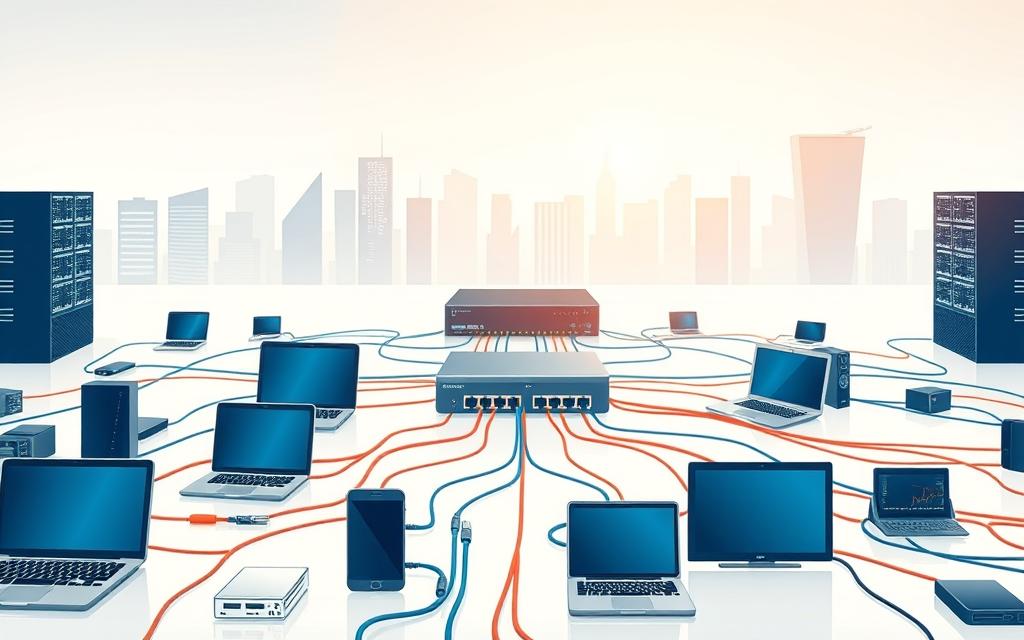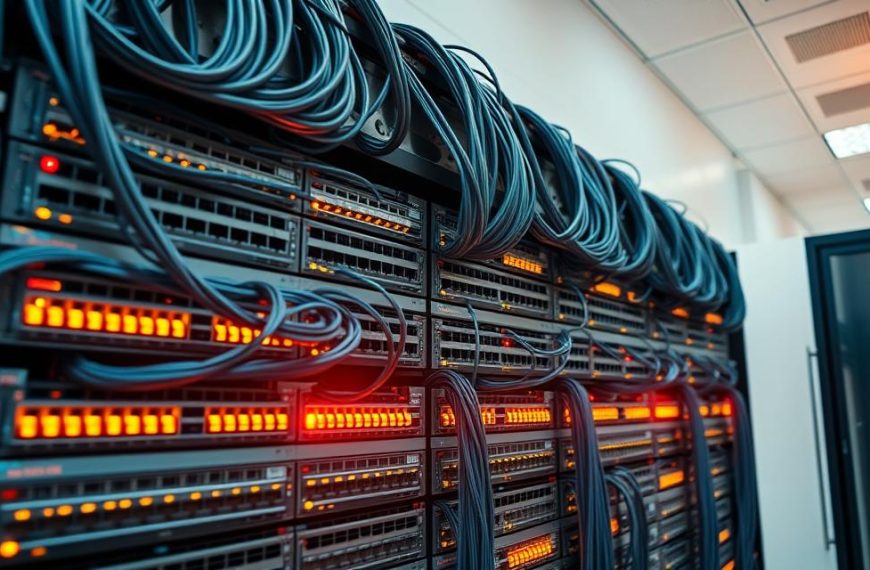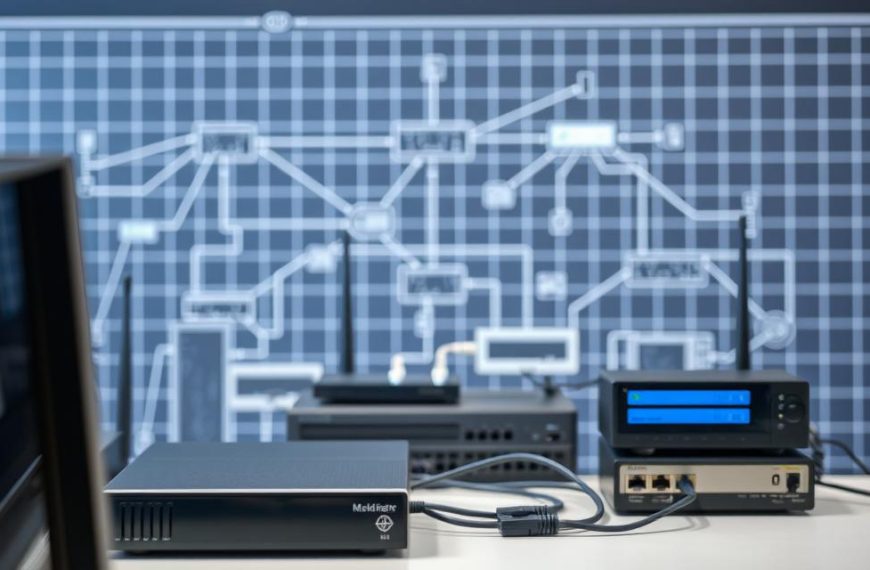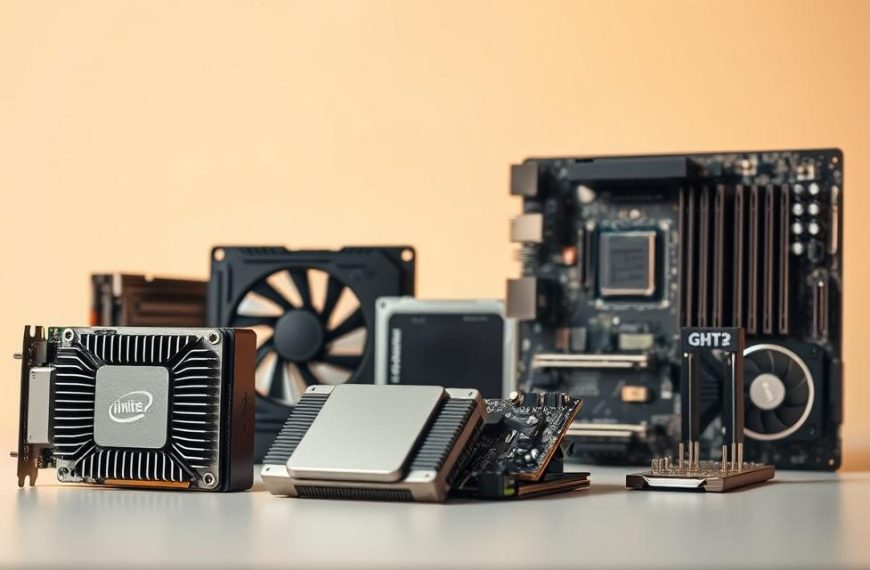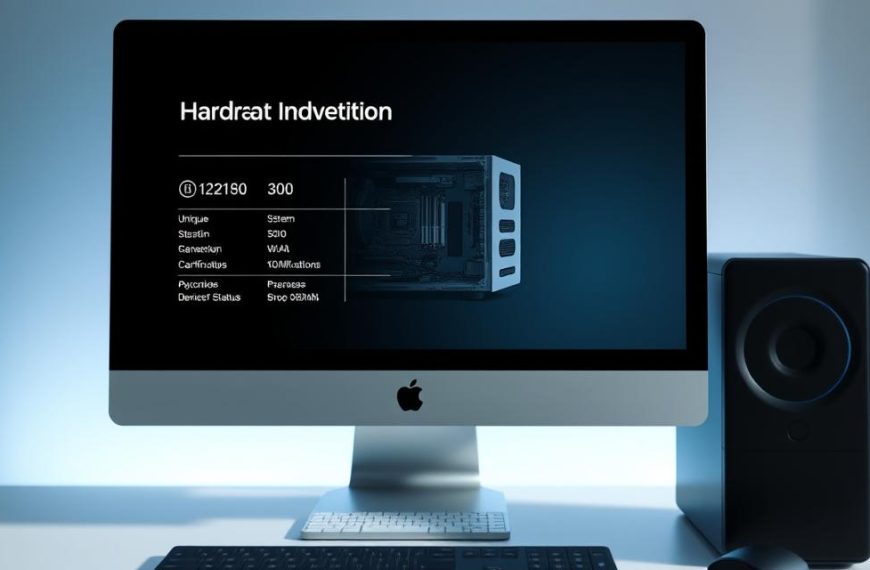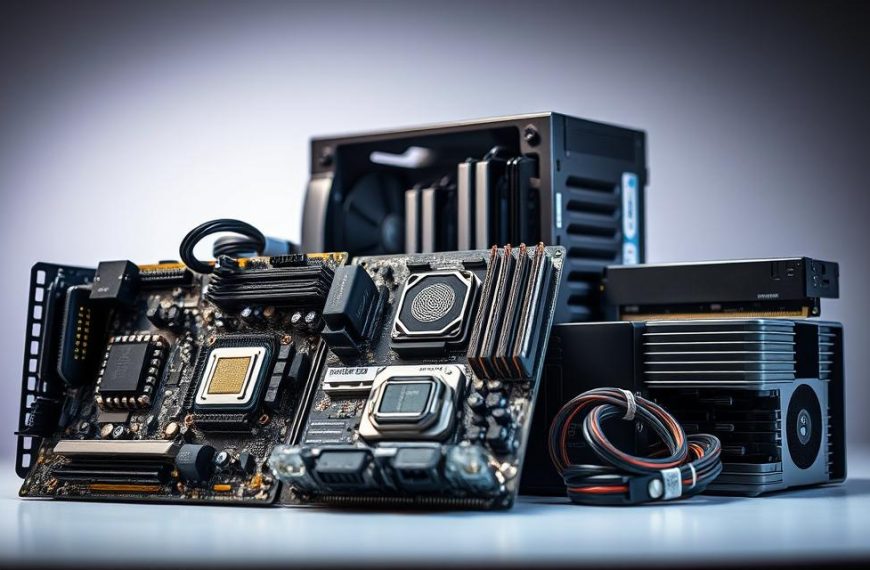Computer networks have changed how we share information in the digital age. They connect multiple devices, allowing them to exchange data and resources easily. Understanding networks is vital for anyone interested in technology and digital communication.
The story of computer networks started with ARPANET, which linked four key research. These were UCLA, Stanford Research Institute, UC Santa Barbara, and the University of Utah. This project laid the groundwork for today’s global internet.
Computer networks use special rules called protocols to operate. Devices use these rules, like TCP, to ensure data arrives safely. Networks allow computers to share information and work together efficiently.
Modern networks have grown from simple links to complex systems. They support everything from emails to global business operations. These networks enable fast data transfer and easy communication across different devices and locations.
Learning about networks helps you understand the tech behind our connected world. It’s useful for both tech fans and professionals in digital communication. This knowledge gives insights into the systems powering our daily digital interactions.
Understanding Computer Networks: Basic Concepts and Importance
Computer networks link devices, enabling worldwide communication and data sharing. These systems form the backbone of modern digital interactions. They’ve changed how we chat, work, and get information.
Networks are vital tech ecosystems for device communication. They’re key in personal and business information exchange.
What is a Computer Network?
A computer network connects devices to share data using standard protocols. These can be small local setups or large global systems.
- Enables data transmission between multiple devices
- Supports collaborative digital environments
- Facilitates resource sharing and communication
The Evolution from ARPANET to Modern Networks
Network tech started with ARPANET, a 1960s project funded by the Department of Defense. It first linked four research centres.
ARPANET set the stage for today’s internet structure. It was a big step in network development.
| Network Era | Key Characteristics |
|---|---|
| ARPANET (1960s) | First operational packet-switching network |
| Early Internet (1980s) | Introduction of TCP/IP protocols |
| Modern Networks (2000s-Present) | Cloud-based, software-defined networking |
Key Components of Computer Networks
Network parts are crucial for digital communication. These include nodes, network cards, switches, routers, and protocols.
- Network Interface Cards (NICs)
- Switches and Routers
- Communication Protocols
- Transmission Media
Grasping these network basics helps us understand our connected world. They show how complex digital systems work together.
How Does a Computer Network Operate: Core Mechanisms
Computer networks use complex systems to send data across devices and places. Network protocols manage how info travels between computers. They ensure smooth and reliable communication.
Packet switching is key to network communication. It breaks data into smaller units called packets. These packets travel separately across the network.
This method allows for flexible and strong data transfer. Packets can take different routes to reach their final spot.
- Each packet contains source and destination addressing information
- Packets can take different routes to reach their final destination
- The receiving computer reassembles packets in the correct order
The Transmission Control Protocol/Internet Protocol (TCP/IP) is vital for internet communication. It ensures data packets are handled correctly.
- Correctly addressed
- Routed efficiently
- Reassembled accurately at the destination
| Network Protocol | Primary Function | Data Transmission Speed |
|---|---|---|
| TCP/IP | Packet Routing | Varies by network infrastructure |
| UDP | Quick Data Transfer | Faster, less reliable transmission |
Modern core networks have grown to meet complex data needs. They can now move traffic at high speeds.
These networks link Wide-Area Networks (WAN) and Local Area Networks (LAN) with great skill. They form the backbone of our digital world.
Networks are the digital highways that connect our global information ecosystem.
Essential Network Devices and Infrastructure
Network hardware forms the backbone of robust computer networks. These specialised components enable seamless communication and data transmission. Understanding these elements helps users grasp how digital networks function and connect.
Network infrastructure consists of key devices working together. These hardware elements ensure smooth data transfer across various tech environments. They facilitate efficient communication in diverse settings.
Routers: The Network Traffic Directors
Routers are vital network hardware that direct data packets between network segments. They connect multiple networks and make smart routing decisions based on IP addresses.
- Manage network traffic between different networks
- Provide network address translation (NAT)
- Offer basic network security features
Switches: Local Network Connection Managers
Switches are crucial network hardware within local area networks (LANs). They smartly forward data packets to specific devices, boosting network efficiency. This makes them superior to traditional hubs.
- Connect multiple devices within a single network
- Reduce network congestion
- Support various connection speeds
Wireless Networks and Connectivity
Modern wireless networks have revolutionised digital communication. They enable flexible and mobile connectivity across various devices and settings. Wi-Fi technology provides seamless internet access in diverse environments.
- Support mobile and flexible connectivity
- Enable multiple device connections
- Provide broader network coverage
Routers, switches, and wireless tech form a comprehensive network infrastructure. This integration supports modern digital communication needs. It creates a robust foundation for today’s connected world.
Types of Computer Networks and Their Applications
Computer networks are vital for modern digital communication. They link devices across various scales and distances. These systems allow smooth data sharing and communication.
Different network types serve unique purposes. They cover distinct geographical ranges. From small personal setups to massive enterprise networks, they all play crucial roles.
- Personal Area Networks (PAN): Intimate networks spanning 1-10 meters
- Local Area Networks (LAN): Connecting devices within a limited area
- Wide Area Networks (WAN): Extensive networks covering large geographical regions
- Enterprise networks: Comprehensive systems supporting business operations
| Network Type | Range | Typical Speed | Setup Cost |
|---|---|---|---|
| PAN | 1-10 meters | Very High | Very Low |
| LAN | Up to 2 kilometers | Very High (100 Mbps) | Low |
| WAN | Over 50 kilometers | Low | Very High |
Enterprise networks blend multiple network types for robust communication. They mix LAN, WAN, and PAN technologies to support diverse business needs. This ensures efficient data transmission and resource sharing.
Modern network technologies enable global connectivity, transforming how organisations communicate and operate.
Wireless tech like Wi-Fi and Bluetooth have changed network connectivity. They’ve made PAN and LAN setups more flexible and accessible. These advancements have revolutionised how we connect devices.
Network Security and Data Protection
Network security is vital for protecting digital infrastructure in our connected world. Modern organisations face sophisticated threats that require robust protective strategies. Comprehensive data protection measures safeguard critical digital assets against potential cyber intrusions.
Next Generation Firewalls block 99% of malware and application-layer attacks. These systems integrate multiple security features like intrusion prevention and threat detection. Zero Trust Network Access enhances security by reducing attack surfaces by 30%.
Multi-factor authentication prevents up to 99.9% of account compromise attacks. Data Loss Prevention technologies stop unauthorised transmission of sensitive information. They reduce compliance violations by 70%.
Proactive monitoring strategies anticipate potential security challenges before they escalate. Network Traffic Analysis tools use artificial intelligence to detect anomalies in real-time network traffic.
Cloud-based solutions are becoming more common in network security. About 70% of organisations have moved half their applications to cloud environments. This shift requires advanced security protocols.
Investing in comprehensive network security measures can save businesses an average of £2.4 million per data breach. This fact highlights the importance of robust cybersecurity strategies.

